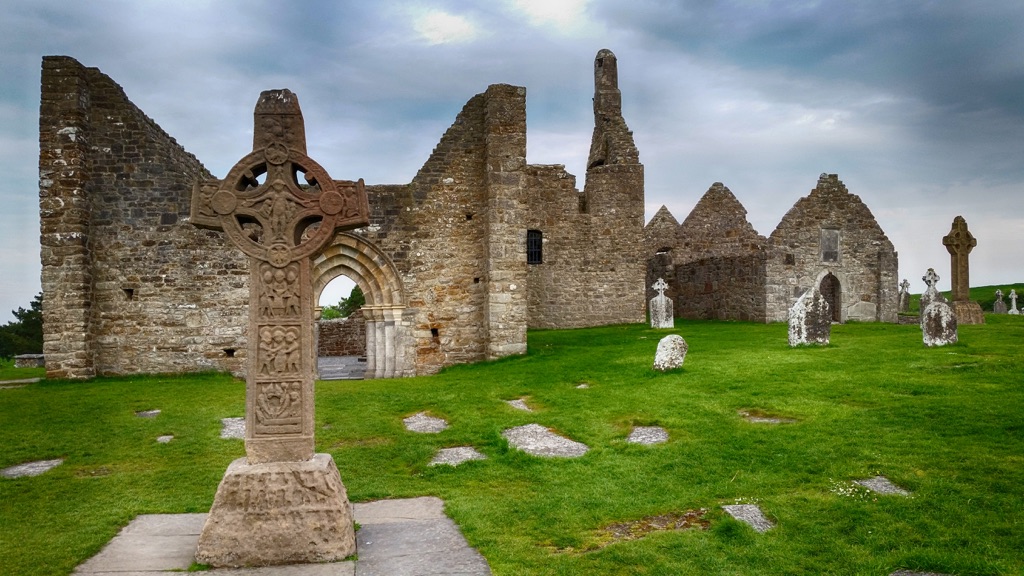Clonmacnoise is an ancient monastic site located in County Offaly, Ireland, on the banks of the River Shannon. Founded by St. Ciarán in the mid-6th century, it became a center for religion, learning, craftsmanship, and trade. The site includes the ruins of a cathedral, seven churches, two round towers, three high crosses, and a large collection of early Christian grave slabs. For centuries, it was a site of pilgrimage and an important center of religion, learning, and craftsmanship. Clonmacnoise was also a burial place for the kings of Tara and Connacht. Today, it stands as a significant historical and archaeological site, attracting scholars and visitors from around the world.
Get your dose of History via Email
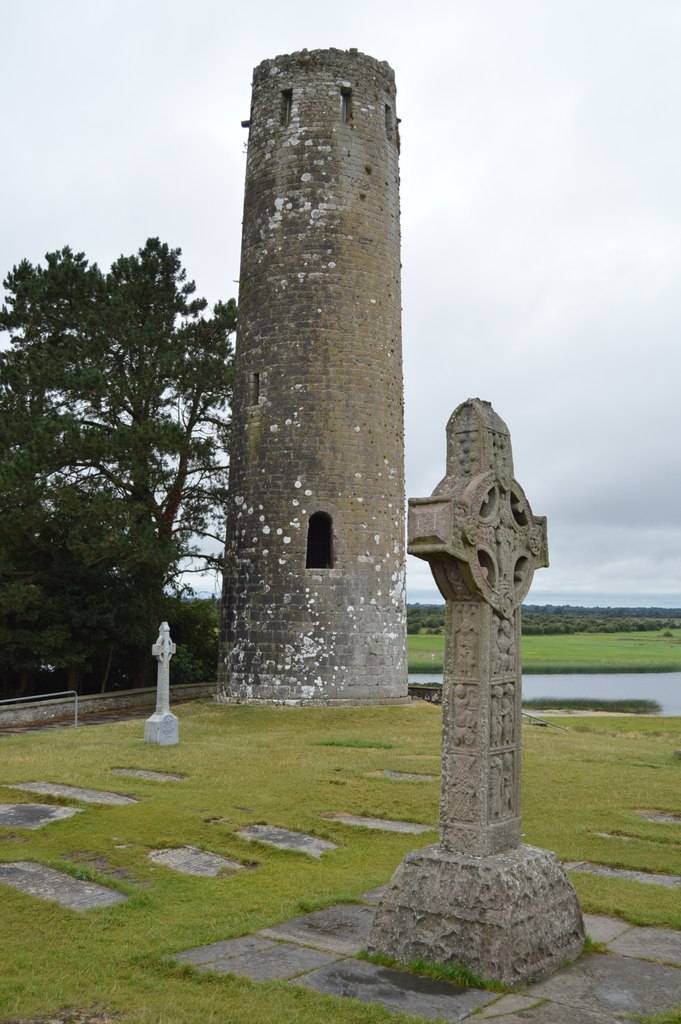
Historical Background of Clonmacnoise
The discovery of Clonmacnoise dates back to its founding by St. Ciarán in 544 AD. The son of a master craftsman, St. Ciarán chose the site at the crossroads of the ancient East-West land route across Ireland and the River Shannon. It quickly became an important center for religion, attracting scholars and pilgrims. Over time, it grew into a renowned ecclesiastical city.
The builders of Clonmacnoise were the early Irish Christians, and the site reflects the architectural style of the time. It features a mix of simple and intricate designs, characteristic of early Christian art. The high crosses, in particular, are masterpieces of this era.
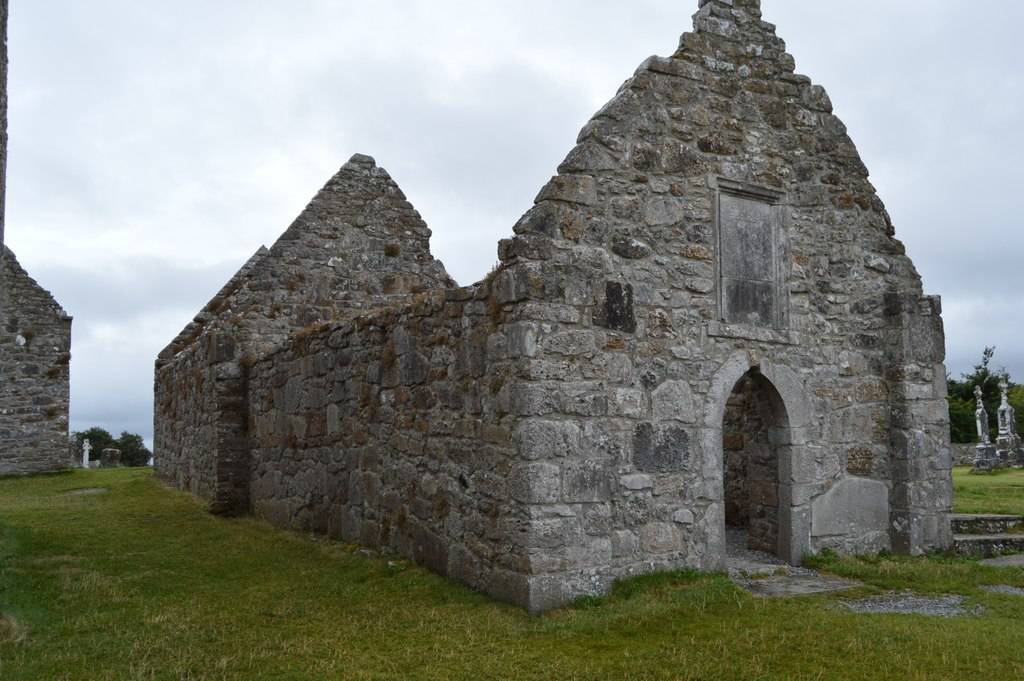
Throughout its history, Clonmacnoise was not just a static religious site. It was a living community that saw invasions, plunders, and destruction, often rebuilt. It was also a place of learning, with a scriptorium where the famous Book of the Dun Cow was written.
Historically, Clonmacnoise held significant importance due to its strategic location. It was the scene of numerous meetings of the High Kings of Ireland. The site was also attacked frequently during the Viking and Norman invasions but remained an important religious center until the 16th century.
The decline of Clonmacnoise began in the 12th century with the rise of other ecclesiastical centers. However, it remained inhabited until the 1552 when it was finally destroyed by the English garrison from nearby Athlone.
About Clonmacnoise
Clonmacnoise is a testament to early Christian Ireland, with its impressive collection of ecclesiastical architecture. The site includes a cathedral, seven churches, two round towers, and three high crosses, known as the Cross of the Scriptures, the South Cross, and the North Cross.
The construction of Clonmacnoise used local materials, including limestone for the high crosses and churches. The round towers, typical of Irish monastic sites, served as bell towers and places of refuge. The site’s layout reflects the monastic community’s needs for worship, study, and communal living.
The Cathedral, the largest church at Clonmacnoise, underwent several expansions and renovations over the centuries. It features Romanesque arches and Gothic windows, showcasing the evolution of architectural styles.
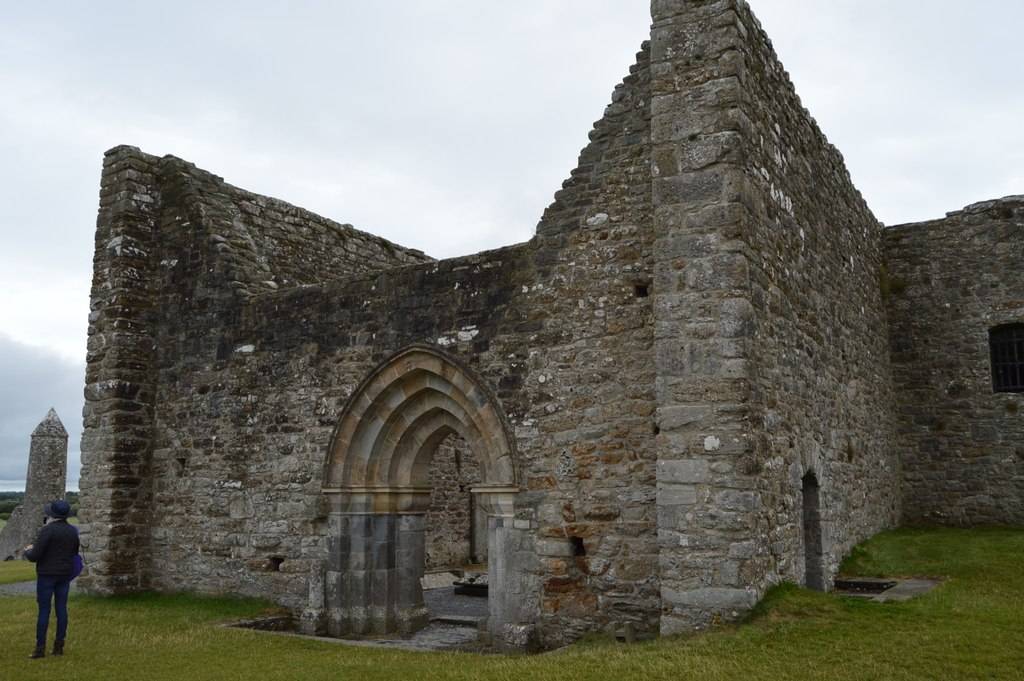
The high crosses of Clonmacnoise are particularly noteworthy. The Cross of the Scriptures, for example, is intricately carved with biblical scenes and stands as a masterpiece of Irish high cross sculpture.
The site also includes a large collection of early Christian grave slabs, which are significant for their inscriptions and iconography. These provide valuable insights into the beliefs and social structures of the time.
Theories and Interpretations
Clonmacnoise has been the subject of various theories and interpretations over the years. Scholars have debated its role in early Christian Ireland, particularly its significance as a center of learning and craftsmanship.
Some theories suggest that Clonmacnoise’s strategic location contributed to its development as a major center for trade and communication. This, in turn, may have influenced the spread of Christianity in Ireland.
The purpose of the high crosses has also been interpreted in different ways. While they clearly had religious significance, some suggest they were also used as teaching tools, illustrating stories from the scriptures.
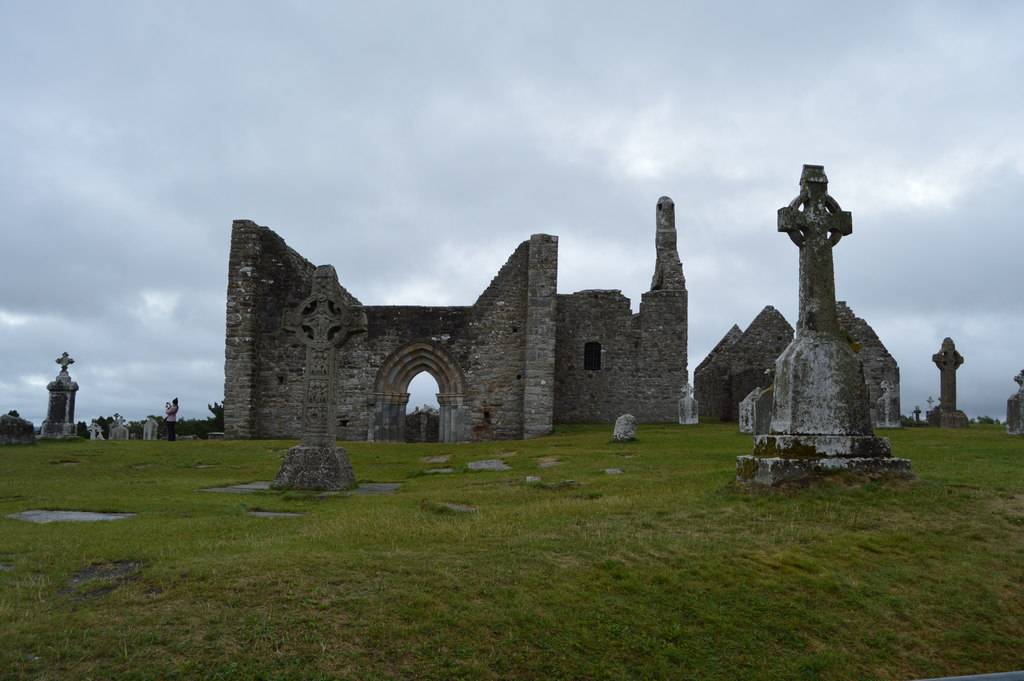
Archaeological excavations have provided evidence for dating the site. Radiocarbon dating, for example, has been used to confirm the age of some of the wooden structures. The high crosses and buildings have been dated through stylistic analysis and historical records.
Despite the wealth of historical data, certain aspects of Clonmacnoise remain a mystery. The exact uses of some buildings and the full extent of the site’s influence during its peak are still subjects of research and debate.
At a glance
Country: Ireland
Civilization: Early Irish Christians
Age: Founded in 544 AD
Conclusion and Sources
The information in this article was gathered from reputable sources to ensure accuracy and reliability. These sources include:
- Wikipedia: https://en.wikipedia.org/wiki/Clonmacnoise

